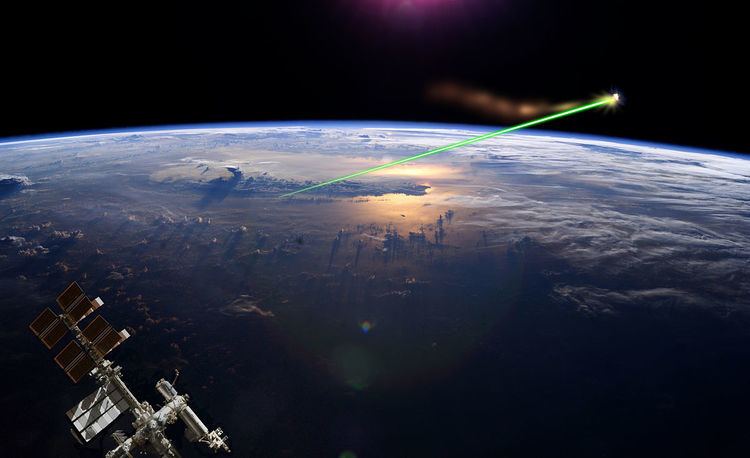 | ||
A laser broom is a proposed ground-based laser beam-powered propulsion system whose purpose is to sweep space debris out of the path of other artificial satellites such as the International Space Station. It would heat one side of an object enough to change its orbit and make it hit the atmosphere sooner.
Contents
Technical description
Lasers are designed to target debris between one and ten centimeters in diameter. Collisions with such debris are commonly of such high velocity that considerable damage and numerous secondary fragments are the result. The laser broom is intended to be used at high enough power to penetrate through the atmosphere with enough remaining power to ablate material from the target. The ablating material imparts a small thrust that lowers its orbital perigee into the upper atmosphere, thereby increasing drag so that its remaining orbital life is short. The laser would operate in pulsed mode to avoid self-shielding of the target by the ablated plasma. The power levels of lasers in this concept are well below the power levels in concepts for more rapidly effective anti-satellite weapons.
NASA research in 2011 indicated that firing a laser beam at a piece of space junk could alter velocity by 0.04 inches (1.0 mm) per second. Persisting with these small velocity changes for a few hours per day could alter its course by 650 feet (200 m) per day. While not causing the junk to reenter, this could maneuver it to avoid a collision.
Other funded research into this area refutes NASA's claim and demonstrates the precise physics involved, which shows that space debris is re-entered regardless of the direction of laser illumination. Using a laser guide star and adaptive optics, a sufficiently large ground based laser (1 megajoule pulsed HF laser) can deorbit dozens of objects per day at reasonable cost. This work was summarized in an article in Wired magazine.
Applications and proposed project
The Space Shuttle routinely showed evidence of "tiny" impacts upon post-flight inspection.
Project Orion was a proposed laser broom project estimated to cost $500 million in the 1990s.
